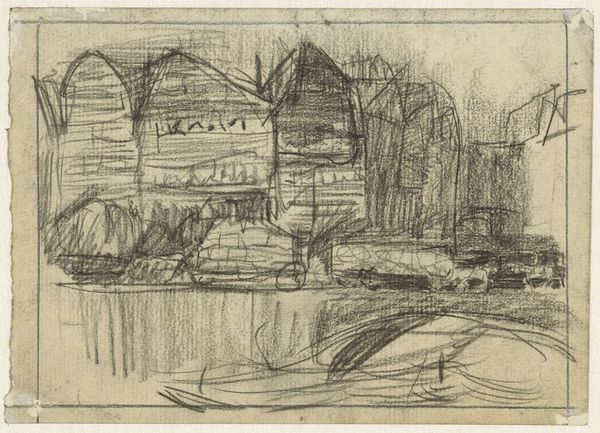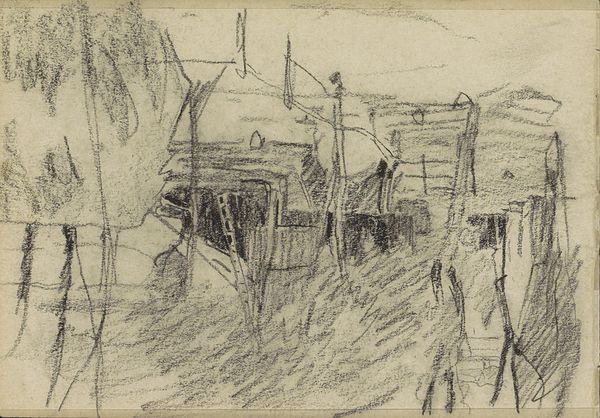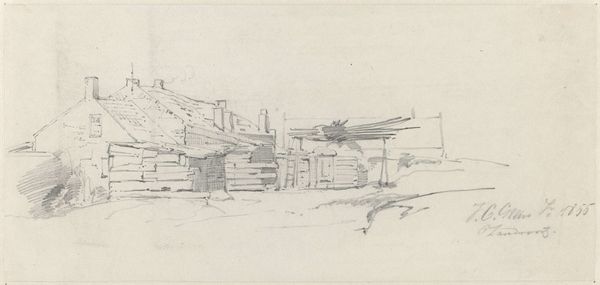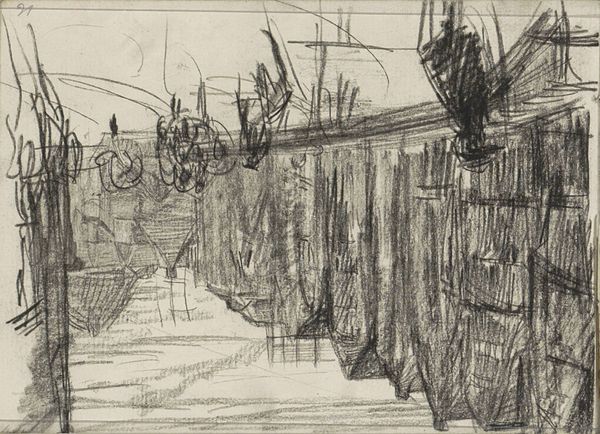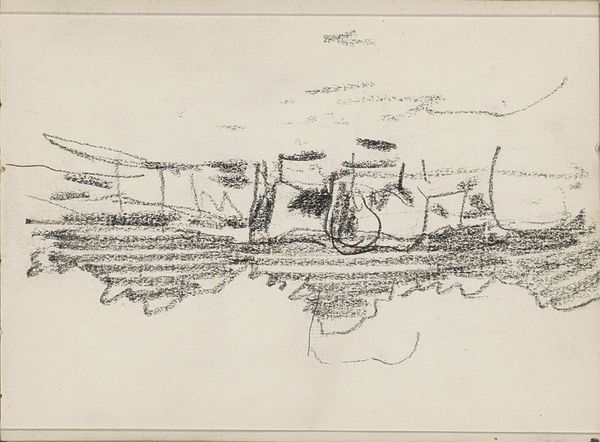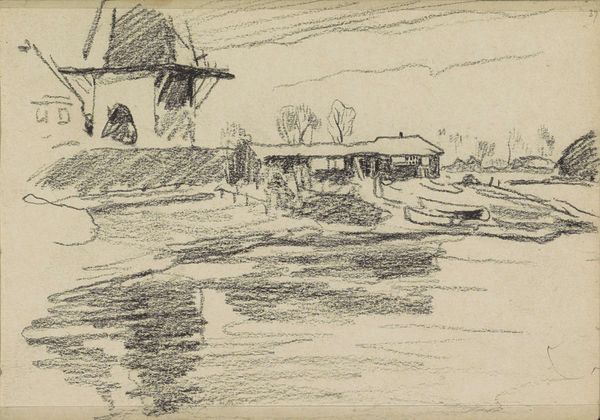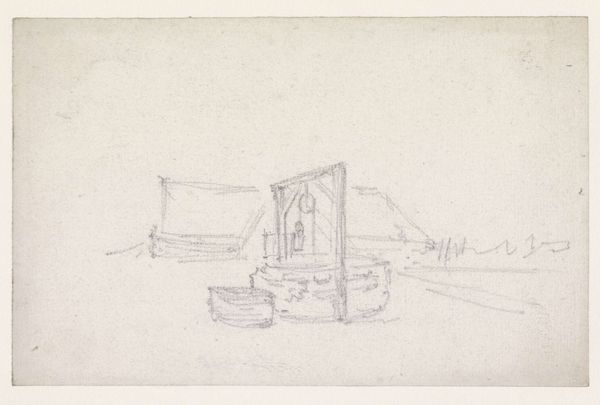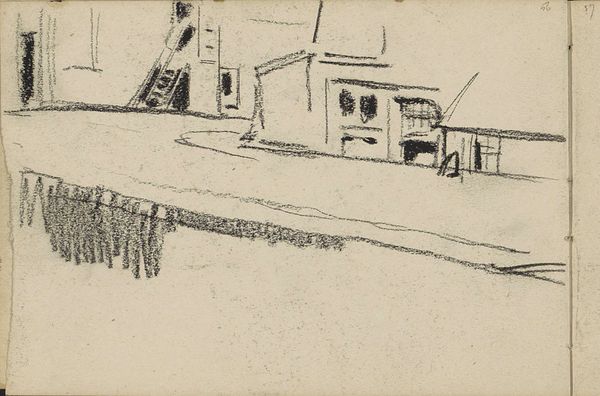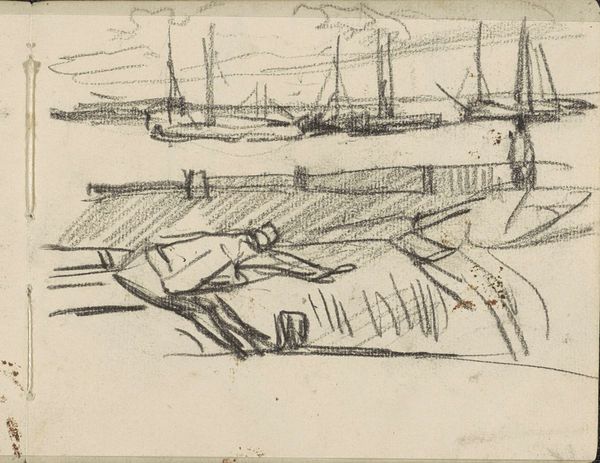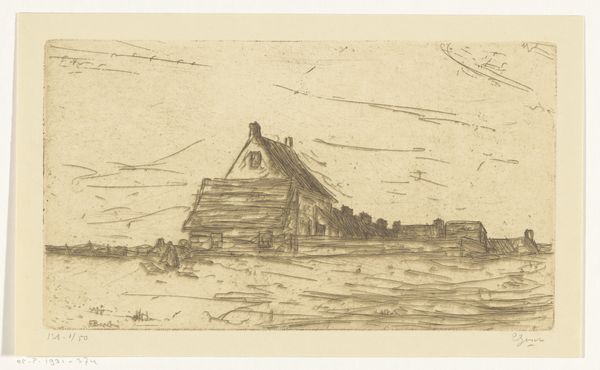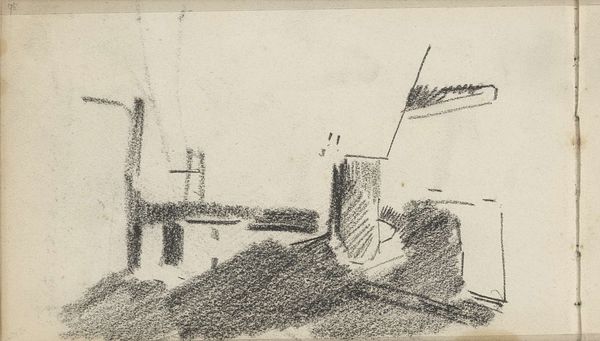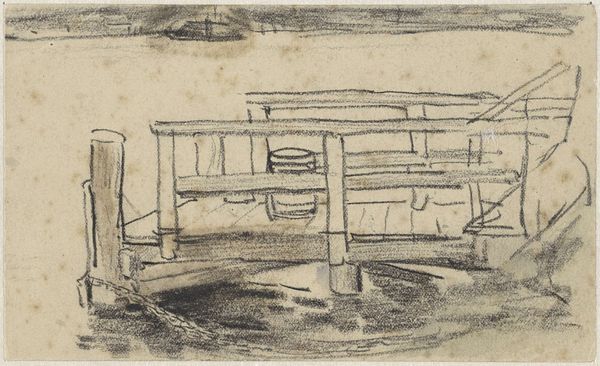
#
quirky sketch
#
pen sketch
#
sketch book
#
personal sketchbook
#
sketchwork
#
pen-ink sketch
#
sketchbook drawing
#
storyboard and sketchbook work
#
sketchbook art
#
initial sketch
Dimensions: height 88 mm, width 160 mm
Copyright: Rijks Museum: Open Domain
Curator: Here we have Adolf le Comte's "Bouwstelling aan water," a pen and ink sketch from somewhere between 1860 and 1921. Editor: There's a raw quality to it, almost urgent. You can feel the artist capturing a fleeting moment. It’s interesting how the stark lines form complex scaffolding. Curator: Yes, the subject matter is compelling, depicting the building scaffolding, perhaps. I think we can view this piece as speaking to industrial development during a tumultuous period when class and labor tensions were reaching a boiling point in much of Europe. Editor: Absolutely. I'm drawn to the visible process of creation. The hasty lines show the artist’s hand, highlighting labor and materiality, but also it presents questions about progress and who benefits from it. Curator: These sketches are a valuable resource in considering urban development and the politics of labor and production during this time. Editor: I also wonder about the choice of the waterway as a backdrop, this evokes how cities function in their relationship with waterways and resources. Curator: Considering the labor of those building these structures, along with the potential environmental impacts to the nearby waterway, gives me plenty to contemplate when contextualizing this work. Editor: It certainly highlights that dichotomy—the beauty of potential progress, but at what cost? The artist also captures a sense of labor, not only construction and resource acquisition but his own artist's hand in interpreting and sketching this site. Curator: This is a beautiful, unpolished lens through which to view labor during that historical period. Editor: And a poignant reminder of how art can document both material processes and societal shifts.
Comments
No comments
Be the first to comment and join the conversation on the ultimate creative platform.
